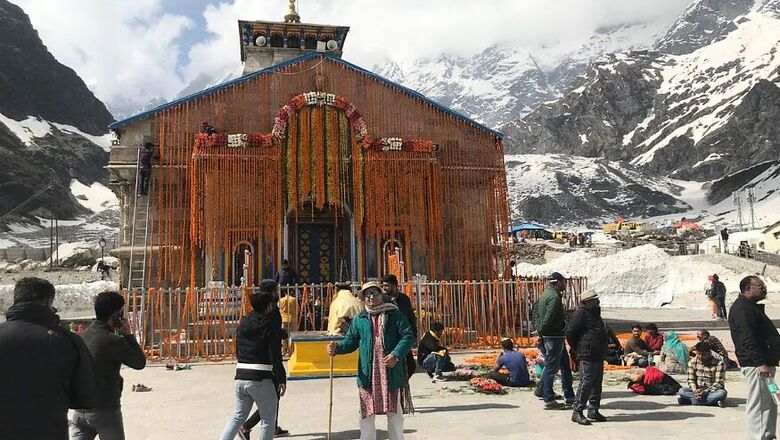
views
Kedarnath Yatra 2019 | Portals of the Kedarnath temple in the Garhwal Himalayan range of Uttarakhand have opened up for pilgrims after a period of six months of long winter break.The idol of Lord Shiva which had been moved to his winter abode of Omkareshwar Temple in Ukhimath was transferred on a palanquin from its winter seat on Tuesday, and reached Kedarnath today. The gates of the temple, adorned with floral decorations were opened up to the public at 6.15 am and with this, the pilgrims too will be allowed to undertake the auspicious Chardham yatra to Badrinath, Kedarnath, Gangotri and Yamunotri.
Kedarnath Yatra: History and Legend
While it is not exactly known as to who constructed the temple, Kedarnath has been a pilgrimage site since ancient times. One of the earliest references to the holy site is in the Skanda Purana where it is written that Shiva released the holy water from his matted hair, resulting in the formation of the River Ganges. Historically, Kedarnath was definitely a prominent pilgrimage centre by the 12th century, when it is mentioned in Kritya-kalpataru written by the Gahadavala minister Bhatta Lakshmidhara.
Here are some of the lesser known and interesting facts about Kedarnath Dham which not a lot of people know about:
Construction of the Kedarnath temple: There are various theories made by historians, archeologists and religious groups saying that Raja Bhoj of Malwa, who had ruled between the years of 1076 and 1099 AD had gotten the temple built. Another theory suggests that Adi Shankaracharya had built the temple during the 8th century, while yet others suggest that Kedarnath Dham was built by the Pandava brothers in an attempt receive pardon from Lord Shiva after performing their penance during the Dwapar Yuga.
Kedarnath Temple was covered in snow for 400 years: Geologists claim that the temple of Kedarnath was under snow for nearly 400 years, around 1300-1900 AD, a period known as the Little Ice Age. Scientists from the Wadia Institute of Himalayan Geology, Dehradun, say the several yellow lines on the temple walls point to glacial activity in the region.
Divine intervention: Legend says that the temple is always blessed with the omniscient presence of Lord Shiva who protects the shrine. Believers point towards the 2013 devastation when Kedarnath flooding which hundreds. However, the main Dham shrine was protected by a massive mountain boulder rock which had mysteriously wedged itself between the gushing flood water and the temple shrine.
Irregular stone lingam: The main idol of Lord Shiva in the Kedarnath temple is a conical three faced lingam and not the usual ones we see. According to legends, while
escaping from the Pandavas, Lord Shiva had disguised Himself as a bull. Bhim had caught his ruse and held him by his tail. To escape he started sinking himself inside the ground. This conical form replicates the hinds of the bull.
The eternal flame: While Kedarnath Dham remains closed for six months, and the presiding deity is shifted to Ukhimath, the Kedarnath Dham temple remains lighted up from the inside with the help of an eternal flame or Akhand Jyoti which miraculously does not extinguish.















Comments
0 comment